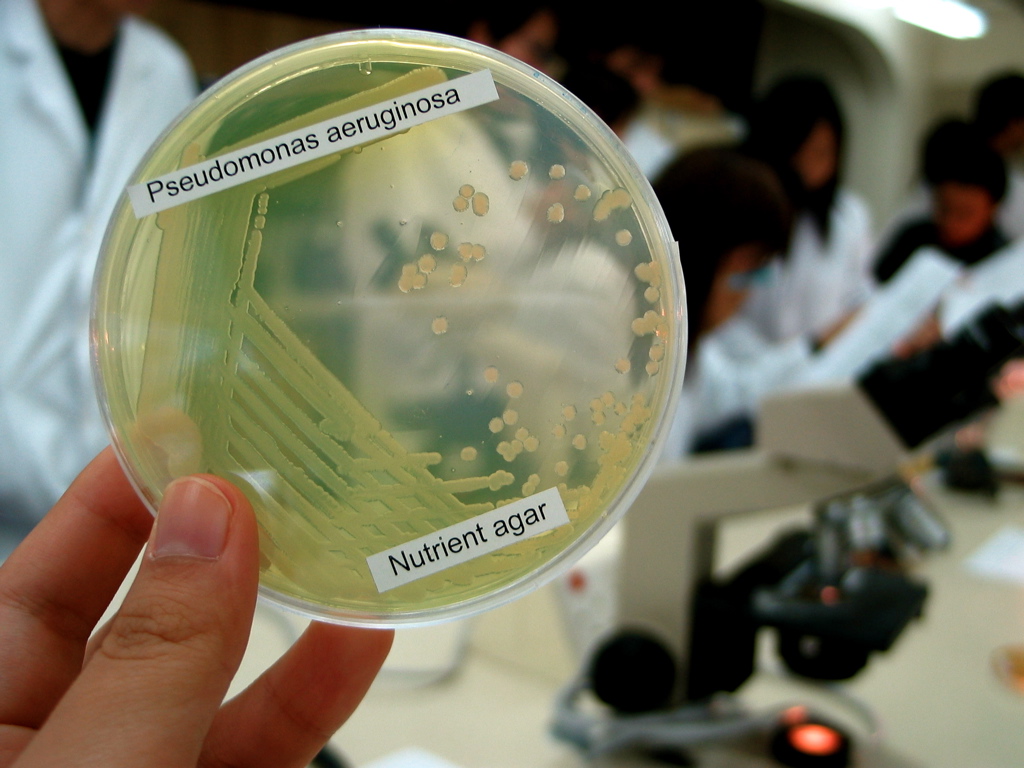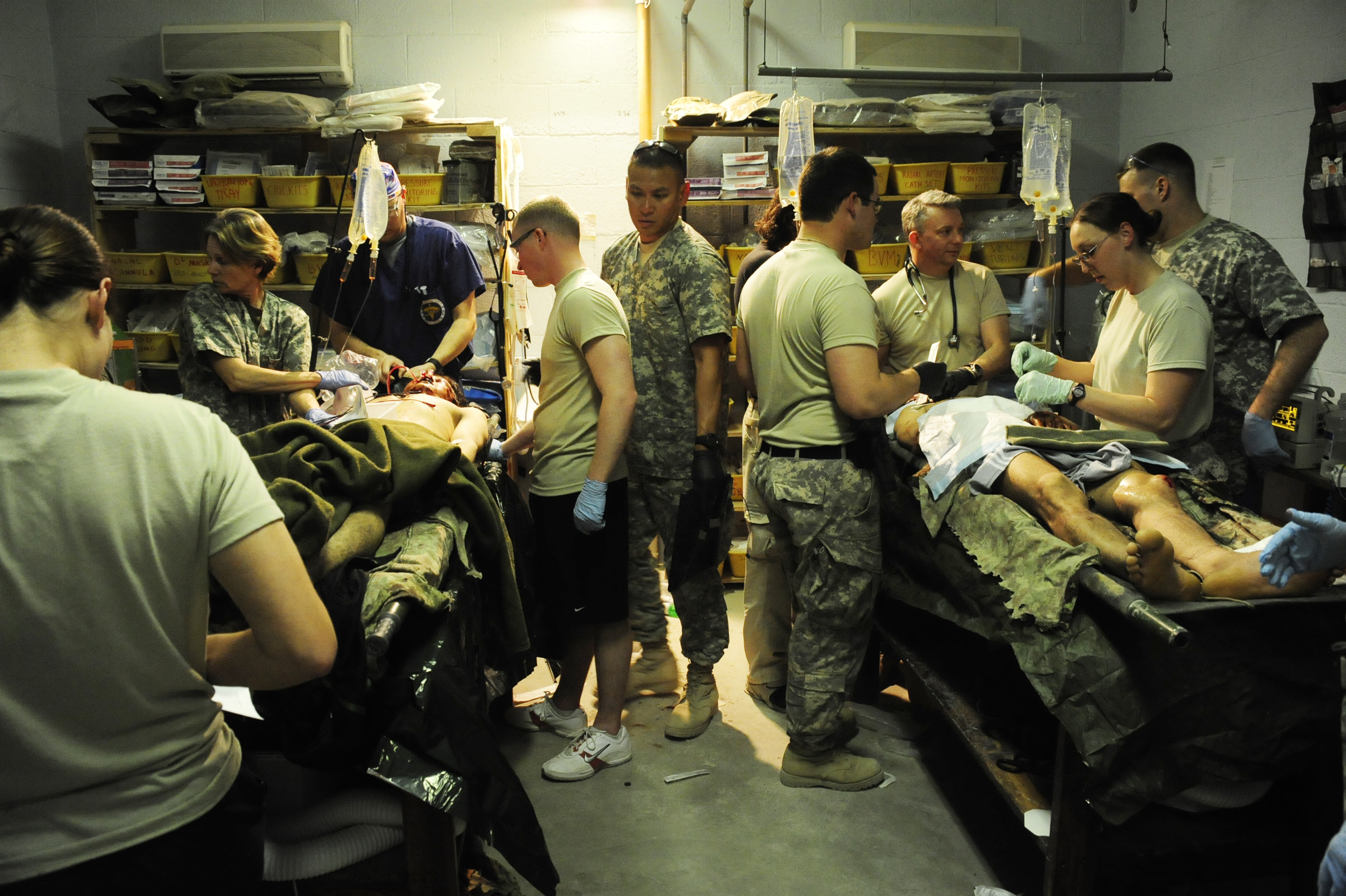|
Pseudomonadales
The Pseudomonadales are an order of Pseudomonadota. A few members are pathogens, such as species of ''Pseudomonas'', ''Moraxella'', and '' Acinetobacter'', which may cause disease in humans, animals and plants. ''Pseudomonas'' The bacterial genus ''Pseudomonas'' includes the opportunistic human pathogen '' P. aeruginosa'', plant pathogenic bacteria, plant beneficial bacteria, ubiquitous soil bacteria with bioremediation capabilities and other species that cause spoilage of milk and dairy products. ''Pseudomonas aeruginosa'' can cause chronic opportunistic infections that have become increasingly apparent in immunocompromised patients and the ageing population of industrialised societies. The genome sequences of several pseudomonads have become available in recent years and researchers are beginning to use the data to make new discoveries about this bacterium. ''Acinetobacter'' The genus '' Acinetobacter'' is a group of Gram-negative, nonmotile and nonfermentative bacteria belongi ... [...More Info...] [...Related Items...] OR: [Wikipedia] [Google] [Baidu] |
Pseudomonadaceae
The Pseudomonadaceae are a family of bacteria which includes the genera '' Azomonas'', '' Azorhizophilus'', ''Azotobacter'', '' Mesophilobacter'', ''Pseudomonas'' (the type genus), and '' Rugamonas''. The family Azotobacteraceae was recently reclassified into this family. History Pseudomonad literally means false unit, being derived from the Greek ''pseudo'' ( – false) and ''monas'' (μονος – a single unit). The term "monad" was used in the early history of microbiology to denote single-celled organisms. Because of their widespread occurrence in nature, the pseudomonads were observed early in the history of microbiology. The generic name ''Pseudomonas'' created for these organisms was defined in rather vague terms in 1894 as a genus of Gram-negative, rod-shaped, and polar-flagellated bacteria. Soon afterwards, a large number of species was assigned to the genus. Pseudomonads were isolated from many natural niches. New methodology and the inclusion of approaches based on ... [...More Info...] [...Related Items...] OR: [Wikipedia] [Google] [Baidu] |
Moraxellaceae
The Moraxellaceae are a family of Gammaproteobacteria, including a few pathogenic species.George M. Garrity: ''Bergey's Manual of Systematic Bacteriology''. 2. Auflage. Springer, New York, 2005, Volume 2: ''The Proteobacteria, Part B: The Gammaproteobacteria'' Others are harmless commensals of mammals and humans or occur in water or soil. The species are mesophilic or psychrotrophic (''Psychrobacter''). [...More Info...] [...Related Items...] OR: [Wikipedia] [Google] [Baidu] |
Pseudomonadota
Pseudomonadota (synonym "Proteobacteria") is a major phylum of gram-negative bacteria. Currently, they are considered the predominant phylum within the domain of bacteria. They are naturally found as pathogenic and free-living (non- parasitic) genera. The phylum comprises six classes ''Acidithiobacillia, Alphaproteobacteria, Betaproteobacteria, Gammaproteobacteria, Hydrogenophilia'', and '' Zetaproteobacteria.'' The Pseudomonadota are widely diverse, with differences in morphology, metabolic processes, relevance to humans, and ecological influence. Classification American microbiologist Carl Woese established this grouping in 1987, calling it informally the "purple bacteria and their relatives". The group was later formally named the 'Proteobacteria' after the Greek god Proteus, who was known to assume many forms. In 2021 the International Committee on Systematics of Prokaryotes designated the synonym Pseudomonadota, and renamed many other prokaryotic phyla as well. Th ... [...More Info...] [...Related Items...] OR: [Wikipedia] [Google] [Baidu] |
Pseudomonas
''Pseudomonas'' is a genus of Gram-negative bacteria belonging to the family Pseudomonadaceae in the class Gammaproteobacteria. The 348 members of the genus demonstrate a great deal of metabolic diversity and consequently are able to colonize a wide range of niches and hosts. Their ease of culture ''in vitro'' and availability of an increasing number of ''Pseudomonas'' strain genome sequences has made the genus an excellent focus for scientific research; the best studied species include '' P. aeruginosa'' in its role as an opportunistic human pathogen, the plant pathogen '' P. syringae'', the soil bacterium '' P. putida'', and the plant growth-promoting '' P. fluorescens, P. lini, P. migulae'', and '' P. graminis''. Because of their widespread occurrence in water and plant seeds such as dicots, the pseudomonads were observed early in the history of microbiology. The generic name ''Pseudomonas'' created for these organisms was defined in rather vague terms by Walter Migula i ... [...More Info...] [...Related Items...] OR: [Wikipedia] [Google] [Baidu] |
Moraxella
''Moraxella'' is a genus of gram-negative bacteria in the family Moraxellaceae. It is named after the Swiss ophthalmologist Victor Morax. The organisms are short rods, coccobacilli, or as in the case of '' Moraxella catarrhalis'', diplococci in morphology, with asaccharolytic, oxidase-positive, and catalase-positive properties.Ala'Aldeen, D. A. A. (2007). "Neisseria and moraxella". In Greenwood, David; Slack, Richard; Peitherer, John; & Barer, Mike (Eds.), ''Medical Microbiology'' (17th ed.), p. 258. Elsevier. . ''M. catarrhalis'' is the clinically most important species under this genus. Roles in disease The organisms are commensals of mucosal surfaces and sometimes give rise to opportunistic infection. * '' M. catarrhalis'' usually resides in respiratory tract, but can gain access to the lower respiratory tract in patients with chronic chest disease or compromised host defenses, thus causing tracheobronchitis and pneumonia. For example, it causes a significant proportion ... [...More Info...] [...Related Items...] OR: [Wikipedia] [Google] [Baidu] |
Pseudomonas Aeruginosa
''Pseudomonas aeruginosa'' is a common Bacterial capsule, encapsulated, Gram-negative bacteria, Gram-negative, Aerobic organism, aerobic–facultative anaerobe, facultatively anaerobic, Bacillus (shape), rod-shaped bacteria, bacterium that can cause disease in plants and animals, including humans. A species of considerable medical importance, ''P. aeruginosa'' is a multiple drug resistance, multidrug resistant pathogen recognized for its ubiquity, its Intrinsic and extrinsic properties, intrinsically advanced antibiotic resistance mechanisms, and its association with serious illnesses – hospital-acquired infections such as ventilator-associated pneumonia and various sepsis syndromes. ''P. aeruginosa'' is able to selectively inhibit various antibiotics from penetrating its outer membrane'' ''– and has high resistance to several antibiotics. According to the World Health Organization ''P. aeruginosa'' poses one of the greatest threats to humans in terms of an ... [...More Info...] [...Related Items...] OR: [Wikipedia] [Google] [Baidu] |
Gamma-150 RNA Motif
The gamma-150 RNA motif is a conserved RNA structure that is found in bacteria within the order Pseudomonadales. Because gamma-150 RNAs are not consistently in 5' UTRs, the gamma-150 motif is presumed to correspond to a non-coding RNA. Experiments conducted on RNA transcripts in ''Pseudomonas syringae'' DC3000 revealed that two gamma-150 RNAs in that organism are transcribed as separate RNA molecules. The transcript length is roughly 380 nucleotides in size, which is almost twice as large as the gamma-150 motif itself. It is likely that they are transcribed by RpoN, a protein that is also referred to as sigma 54. Structurally, the gamma-150 motif consists of four independent stem-loops. The first stem-loop (the stem-loop closest to the 5' end of the RNA) has significant covariation in support of its identity as an RNA (see secondary structure prediction). The second and fourth have more modest evidence, while the third stem-loop might be poorly conserved, or not genuine. Sev ... [...More Info...] [...Related Items...] OR: [Wikipedia] [Google] [Baidu] |
Acinetobacter Baumannii
''Acinetobacter baumannii'' is a typically short, almost round, rod-shaped (coccobacillus) Gram-negative bacterium. It is named after the bacteriologist Paul Baumann. It can be an opportunistic pathogen in humans, affecting people with compromised immune systems, and is becoming increasingly important as a hospital-derived ( nosocomial) infection. While other species of the genus '' Acinetobacter'' are often found in soil samples (leading to the common misconception that ''A. baumannii'' is a soil organism, too), it is almost exclusively isolated from hospital environments. Although occasionally it has been found in environmental soil and water samples, its natural habitat is still not known. Bacteria of this genus lack flagella but exhibit twitching or swarming motility, likely mediated by type IV pili. Motility in ''A. baumannii'' may also be due to the excretion of exopolysaccharide, creating a film of high- molecular-weight sugar chains behind the bacterium to move forwar ... [...More Info...] [...Related Items...] OR: [Wikipedia] [Google] [Baidu] |
Acinetobacter
''Acinetobacter'' is a genus of Gram-negative bacteria belonging to the wider class of Gammaproteobacteria. ''Acinetobacter'' species are oxidase-negative, exhibit twitching motility, and occur in pairs under magnification. They are important soil organisms, where they contribute to the mineralization of, for example, aromatic compounds. ''Acinetobacter'' species are a key source of infection in debilitated patients in the hospital, in particular the species '' Acinetobacter baumannii''. Description Species of the genus ''Acinetobacter'' are strictly aerobic, nonfermentative, Gram-negative bacilli. They show mostly a coccobacillary morphology on nonselective agar. Rods predominate in fluid media, especially during early growth. The morphology of ''Acinetobacter'' species can be quite variable in Gram-stained human clinical specimens, and cannot be used to differentiate ''Acinetobacter'' from other common causes of infection. Most strains of ''Acinetobacter'', except som ... [...More Info...] [...Related Items...] OR: [Wikipedia] [Google] [Baidu] |
Bioremediation
Bioremediation broadly refers to any process wherein a biological system (typically bacteria, microalgae, fungi in mycoremediation, and plants in phytoremediation), living or dead, is employed for removing environmental pollutants from air, water, soil, fuel gasses, industrial effluents etc., in natural or artificial settings. The natural ability of organisms to adsorb, accumulate, and degrade common and emerging pollutants has attracted the use of biological resources in treatment of contaminated environment. In comparison to conventional physicochemical treatment methods bioremediation may offer advantages as it aims to be sustainable, eco-friendly, cheap, and scalable. This technology is rarely implemented however because it is slow or inefficient. Most bioremediation is inadvertent, involving native organisms. Research on bioremediation is heavily focused on stimulating the process by inoculation of a polluted site with organisms or supplying nutrients to promote their growt ... [...More Info...] [...Related Items...] OR: [Wikipedia] [Google] [Baidu] |


